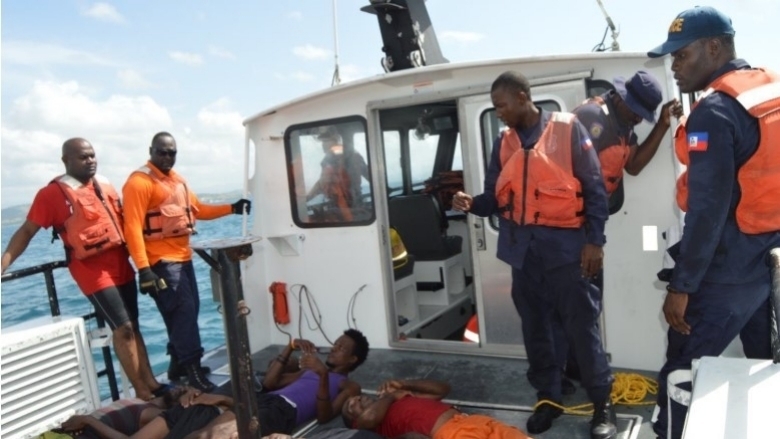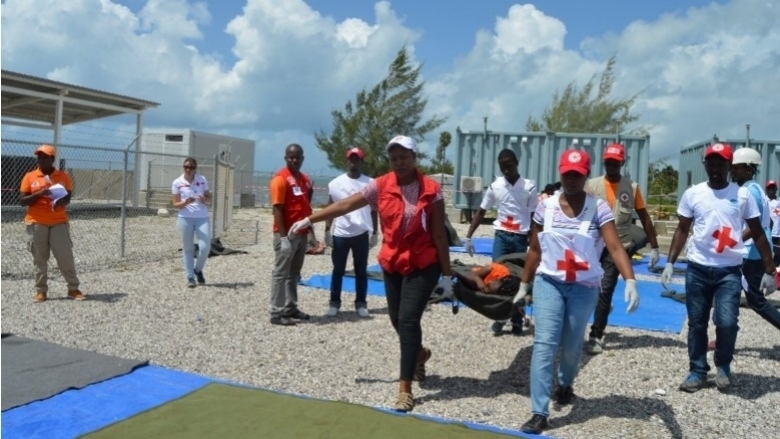Rescue divers hastily land at this rugged plain that serves as a jetty on the shores of the town of Les Cayes in the Sud department in Haiti. They are attempting to resuscitate fishermen who were taken by surprise by a hurricane out at sea. Meanwhile, a group of brigadiers carrying stretchers and first aid supplies rushes over to a deep-sea fisherman who was rescued at sea.
The truth is, this is a simulation exercise. For six years, the Government of Haiti has been conducting this type of exercise. The goal is to assess real-life implementation of coordination procedures in the departments and communes as well as nation-wide operational control. This exercise also allows the civil protection services to test their intervention capacities.
In Haiti, almost 95% of inhabitants live under the threat of a climate-related disaster. “We have barely recovered from the devastating effects of Hurricane Matthew, which ravaged the region in October 2016. The wind blew the roof off our house. I had to run to seek shelter in a school with my wife and our four children,” recalls Mamanne, a 48-year-old deep-sea fisherman. “This simulation exercise helped us better understand the emergency procedures in place in the event of a climate-related disaster.”
The exercise was orchestrated by the Directorate of Civil Protection (DPC), whose mission is to coordinate disaster interventions and proactively establish risk management plans aimed at mitigating the impact. For this full-scale exercise, the DPC mobilized several actors: the national Emergency Operations Center as well as its counterparts in the Sud and Nippes departments, representatives of State and private sector entities, NGOs, donors. “Thanks to this simulation, the entities involved in risk and disaster management were able to fully understand their roles and know exactly when they will need to take action in the event of a disaster,” states Jerry Chandler, Director of Civil Protection.



